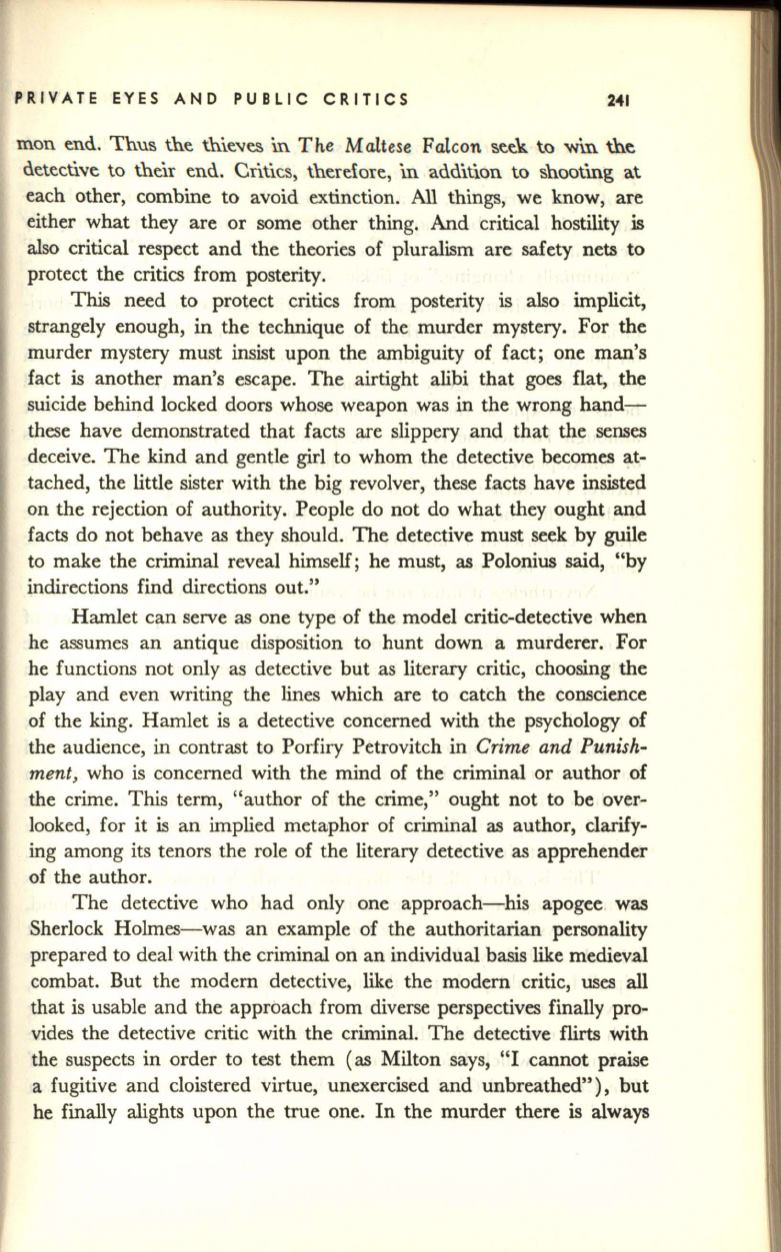
PRIVATE EYES AND PUBLIC CRITICS
241
mon end. Thus the thieves in
The
Maltese Falcon
seek to
win
the
detective to their end. Critics, therefore, in addition to shooting at
each other, combine to avoid extinction. All things, we know, are
either what they are or some other thing. And critical hostility
is
also critical respect and the theories of pluralism are safety nets to
protect the critics from posterity.
This
need to protect critics from posterity
is
also implicit,
strangely enough, in the technique of the murder mystery. For the
murder mystery must insist upon the ambiguity of fact; one man's
fact
is
another man's escape. The airtight alibi that goes flat, the
suicide behind locked doors whose weapon was in the wrong hand–
these have demonstrated that facts are slippery and that the senses
deceive. The kind and gentle girl to whom the detective becomes at–
tached, the little sister with the big revolver, these facts have insisted
on the rejection of authority. People do not do what they ought and
facts do not behave as they should. The detective must seek by guile
to make the criminal reveal himself; he must, as Polonius said, "by
indirections find directions out."
Hamlet can serve as one type of the model critic-detective when
he assumes an antique disposition to hunt down a murderer. For
he functions not only as detective but as literary critic, choosing the
play and even writing the lines which are to catch the conscience
of the king. Hamlet is a detective concerned with the psychology of
the audience, in contrast to Porfiry Petrovitch in
Crime and Punish–
ment,
who is concerned with the mind of the criminal or author of
the crime. This term, "author of the crime," ought not to be over–
looked, for it is an implied metaphor of criminal as author, clarify–
ing among its tenors the role of the literary detective as apprehender
of the author.
The detective who had only one approach-his apogee was
Sherlock Holmes-was an example of the authoritarian personality
prepared to deal with the criminal on an individual basis like medieval
combat. But the modern detective, like the modern critic, uses all
that is usable and the approach from diverse perspectives finally pro–
vides the detective critic with the criminal. The detective
flirts
with
the suspects in order to test them (as Milton says, "I cannot praise
a fugitive .and cloistered virtue, unexercised and unbreathed"), but
he finally alights upon the true one. In the murder there
is
always


